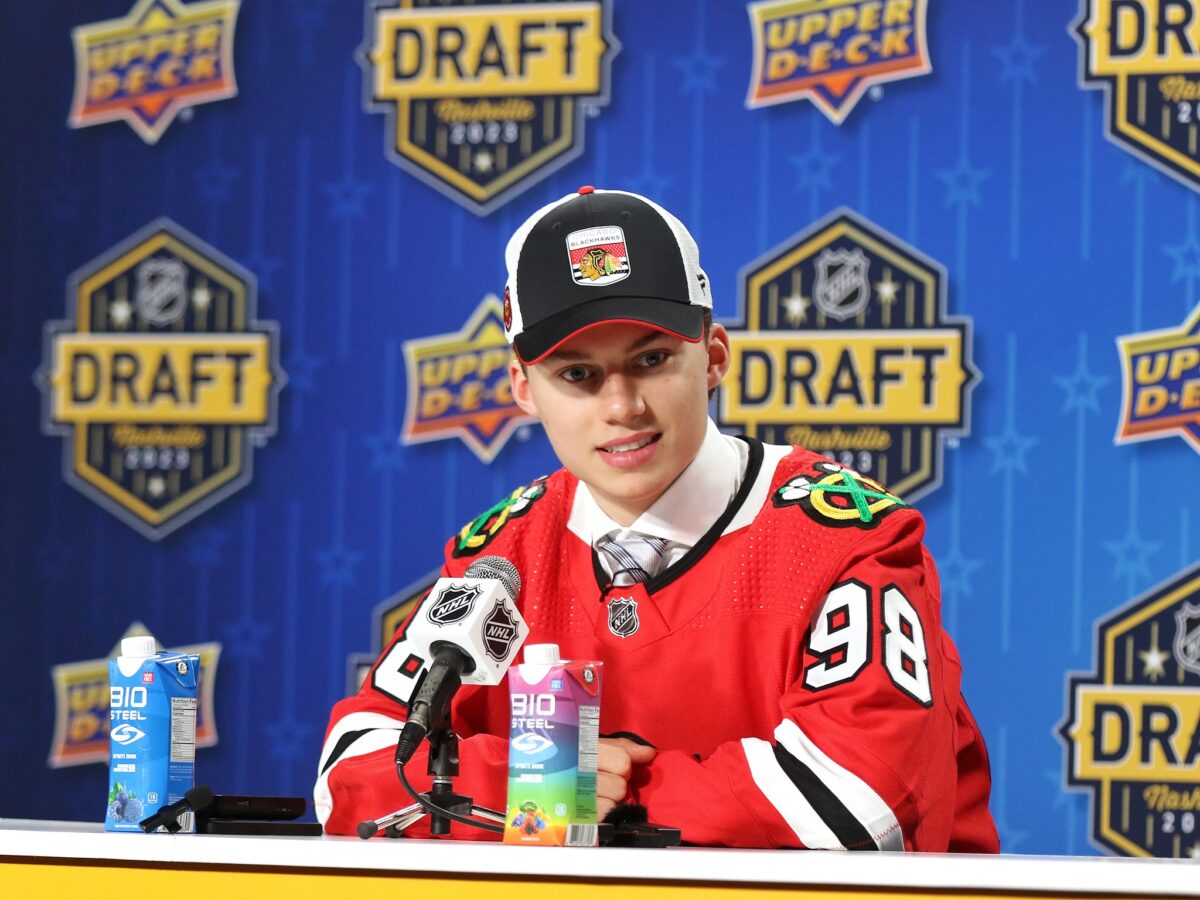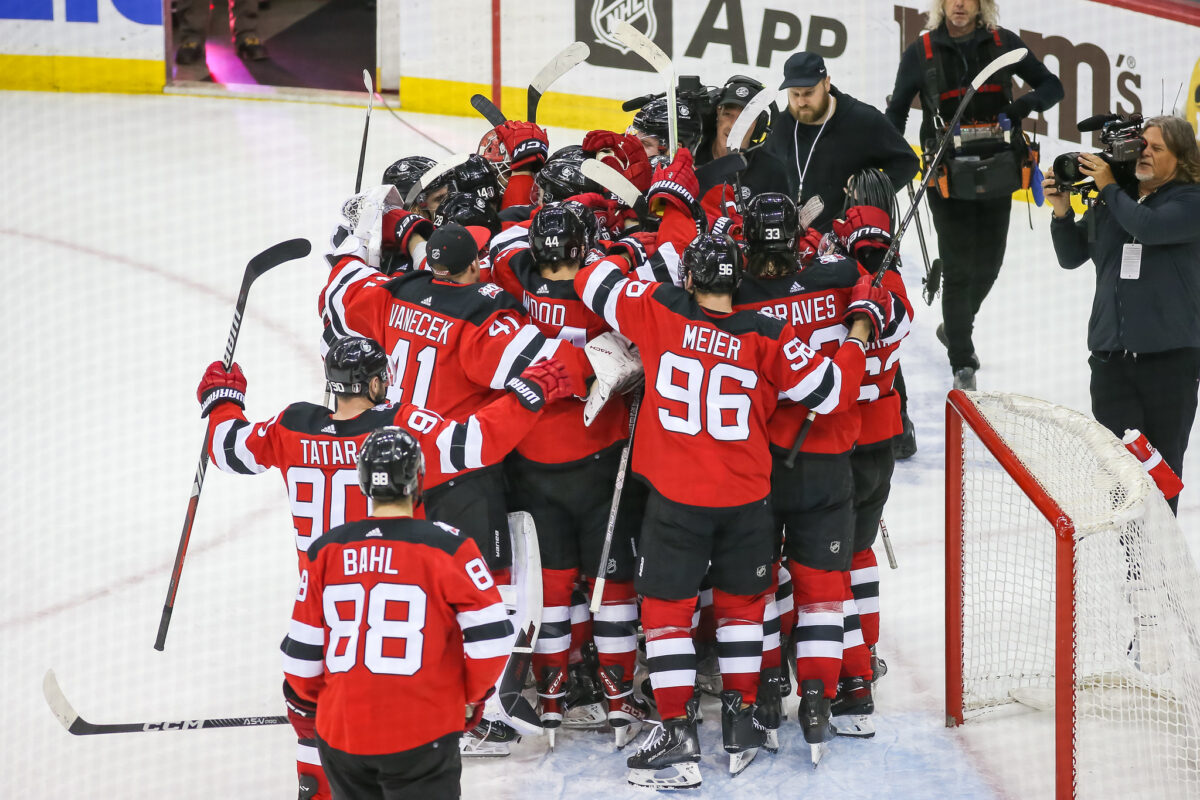Rebuilding in professional sports is a challenge filled with uncertainty and risk. The NHL is a copycat league as teams look to previous renditions of other teams to make their team better. The Chicago Blackhawks find themselves at the beginning of a long development process. This is a very tough spot to be in for one of the most storied franchises in all of sports. Coming out on the other side successfully with a long and bright future is essential for the sport of hockey to grow. In order to do so, they can draw multiple lessons from the rebuild experiences of teams just exiting or still currently in a rebuild.

The few examples that immediately come to mind are the New York Rangers, Toronto Maple Leafs, Buffalo Sabres and New Jersey Devils. The Rangers started with a full rebuild but quickly transitioned out of it by paying key players, signing star free agents and lucking into a franchise defenseman in Adam Fox. The Leafs did the scorched earth tank job, which saw them grow from within due to all the star players they accumulated. Unfortunately, success just hasn’t followed according to plan for the Maple Leafs. The Sabres are similar to the Leafs but showcase the extreme importance of competent management when rebuilding. Lastly, the Devils showcase how a perfect balance can be attained in rebuilding.
It Was Right Until it Wasn’t: The New York Rangers
One of the most important lessons that the Blackhawks can learn from other NHL rebuilds is the importance of patience even when the rebuild looks to be over. The Rangers serve as a great example of this. After the wheels finally fell off the tracks in 2018, they decided to embrace a full rebuild. At the very start, they focused on drafting and developing young talent. However, as time progressed, the Rangers made a handful of errors which negatively affected the team they are today.
Related: Ranking Blackhawks Draft Moves: From Bedard to Perry
The Rangers misinterpreted their rebuilding timeline and totally mismanaged their winger core. Signing Artemi Panarin in a vacuum was a good move considering the Russian winger is a franchise-level player. But for the stage their rebuild was at, with a plethora of elite winger prospects in Kaapo Kakko and Vitaly Kravtsov, this move didn’t make sense (for reference Kravtsov was the number one prospect in all of hockey in 2019). Fast forward to today, and Panarin’s $11.64 million cap hit is now causing a lot of problems.
Another example of not reading the rebuild timeline correctly is Chris Kreider’s contract extension. Giving a top-six 28-year-old power forward first-line money till he’s 36 is just not the right move. This move is especially confusing when you take into account he was the top trade deadline target around the league. The Rangers should have moved him for a huge package and let the younger players/prospects grow into future top-six roles. Lastly, the Rangers decided to bet against skill by trading away elite winger Pavel Buchnevich. He signed a five-year extension with the St. Louis Blues for a couple of million dollars below fair market value. The return for Buchnevich was a second-round draft pick and a fourth-liner in Sammy Blais.
The combination of untimely free-agent signings, not cashing in on Kreider’s trade value and giving away Buchnevich has severely set the Rangers back. On top of all this, these moves have severely hampered the development of their top prospects, such as Kakko, Kravtsov and Alexis Lafreniere. The Rangers are currently a playoff-caliber team, but in a league that is dominated by shootout/overtime loser points, it’s hard to be among the truly elite. Due to these blunders, the Rangers are not elite and probably won’t be with their current core as other teams like the Carolina Hurricanes and Devils become even better.
Developing Homegrown Talent: The Toronto Maple Leafs Model
The Leafs’ rebuilding journey provides another critical lesson for the Blackhawks. Even if you follow the supposed rebuild blueprint to a tee, it doesn’t lead to guaranteed success. The “Shana-Plan” saw the Leafs draft numerous exciting players, such as Auston Matthews, Mitch Marner, and William Nylander, who have become cornerstones for the franchise. Unfortunately, it hasn’t led to playoff success. Similarly to the Rangers, the Leafs offer another example of not jumping the gun on the rebuild timeline.
The signing of John Tavares has been nothing but a burden for the Leafs. It completely ruined their internal salary cap, prevented them from improving their defensive core and still makes cap navigation a nightmare to this day. The lesson to be had from the Leafs’ rebuild is that there is no guarantee for success, regardless of how patient you are.
Learning from Your Mistakes: The Buffalo Sabres
The Sabres’ rebuilding experience serves as a cautionary tale for Chicago. They have gone through multiple rebuild attempts and still haven’t made the playoffs. For every high draft pick they have had, there has been a frequent change in leadership or management. This has led to inconsistency and failure. Their struggles highlight the importance of stability when rebuilding. The Blackhawks can learn from the Sabres’ mistakes by ensuring they have a well-defined plan and a clear vision for the future. This seems to already be the case as Kyle Davidson looks to innovate the hockey management process through baseball-style analytics. Consistent and competent management, plus avoiding knee-jerk reactions are the greatest takeaway from the Sabres’ history of rebuilds.
Combining it all Into One Mold: The New Jersey Devils
Recency bias might have something to say about this, but at the moment the Devils seem to be the team with the brightest future. Built on an internal salary cap (unlike the Maple Leafs), littered with elite prospects at all five skater positions, signing marquee free agents to fair deals (unlike the Rangers) and building an extremely deep team. The lone hole on the team at the moment is goaltending. Which can be solved at the trade deadline due to their wealth of prospects and aspects available for trade.

On forward, they are powered by elite speed and skill in Jack Hughes, Jesper Bratt, Timo Meier and Nico Hischier. The depth isn’t lacking either in Dawson Mercer, Tyler Toffoli and Ondrej Palat. Unlike many other teams, the only player overpaid or on the downswing of their career is Palat. On defense, they have an elite defenseman in Dougie Hamilton, who leads the way alongside John Marino and Jonas Siegenthaler. Furthermore, they have two elite prospects still waiting in the winds in Luke Hughes and Simon Nemec.
From a management aspect, they have done an excellent job in refusing to overpay coveted players such as Damon Severson and Ryan Graves. Graves’ loss will sting a bit more, but he was easily expendable with all the depth they have on the back end. To sum it up briefly, the Devils took chances, and locked up most players before they hit the ground running, refused to overpay their expiring free agents or their free agent signings while also drafting excellently. The Blackhawks need to study the Devils’ rebuild with a fine comb in order to come out successfully on the other side.
Building a Winning Culture Takes Patience, Talent and Luck
Each of the previously mentioned lessons share a common thread about the importance of building and maintaining a winning culture. A winning culture requires patience, competent management and a little bit (or a lot) of luck. As the Blackhawks navigate their rebuild, they can take lessons from the experiences of other teams like the Rangers, Maple Leafs, Sabres and Devils. Strategic patience, developing homegrown talent, learning from mistakes, balancing development and building a winning culture are all essential aspects that can propel the Blackhawks back into the spotlight.
